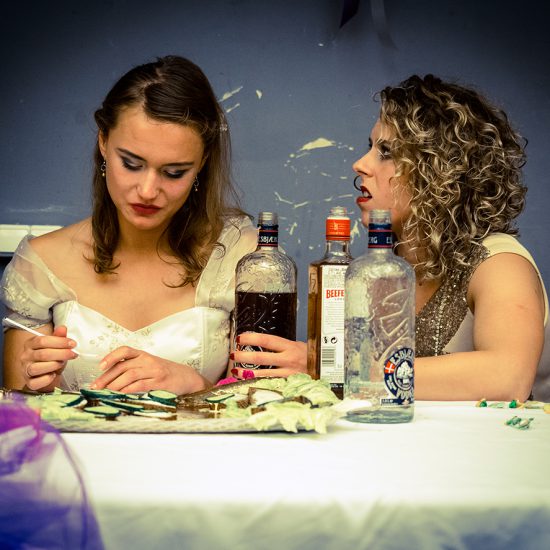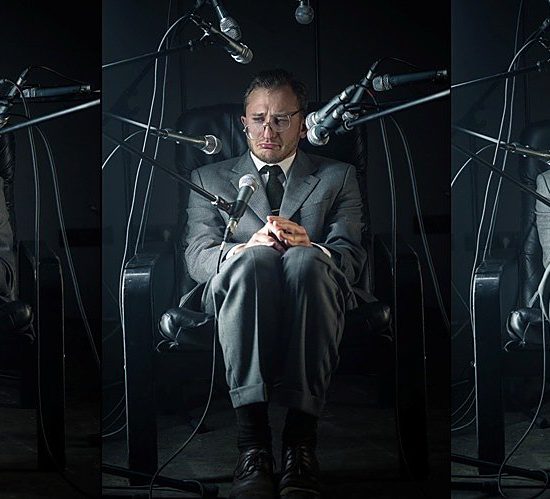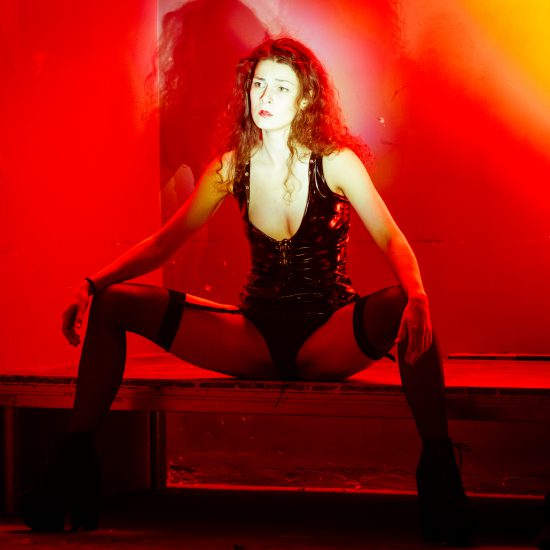Juliet must die
Special attention in this play has got the place where the tragedy is approaching the denouement and the nurse comes to wake up apparently dead Juliet in the morning of her seeming wedding. It’s exactly at this point of the Shakespeare’s text that the director breaks the centuries old staging tradition of “Romeo and Juliet” like a loaf of bread.
…Messing about and muttering meaningless words under her breath, the nurse is preparing herself for a long bride dressing ritual: shoes, tights, a dress, a headdress… The bride is sleeping. She’s dead indeed. It’s only us – the spectators that know this. The nurse starts dressing her as a baby: the tights, the shoes, the dress, the headdress… The audience is waiting in tension: when will the nurse notice that the bride is not alive anymore? When will she start screaming and repenting? It’s still not the moment for the headdress. The nurse continues neatly dressing dead Juliet as a sleeping baby. Gradually her movements become more energetic and concrete. And suddenly we realise that from the very beginning the wedding dress was not meant for the wedding – it was for Juliet’s shroud. Having fully performed the ritual, the nurse puts arms on a Juliet’s body and starts monotonously howling an inconceivable ritual funeral song. The tragedy hits under the heart, tears cause the blackout of mind.



